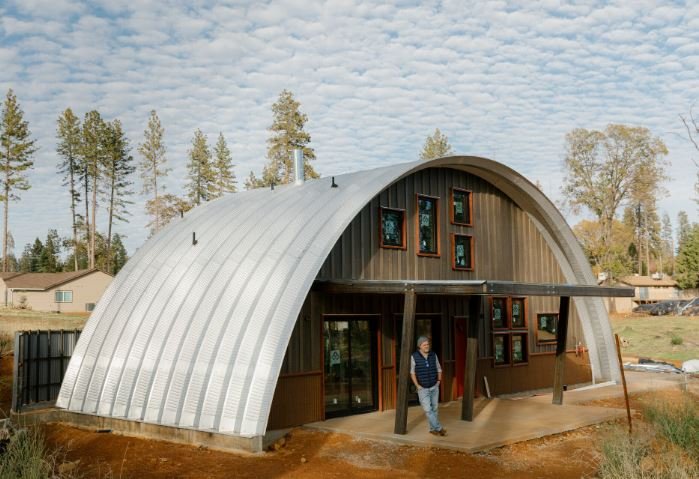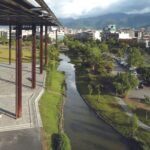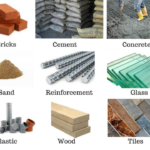Earthquake-Resistant and Flood-Resilient Buildings
Earthquake-resistant and flood-resilient buildings represent the forefront of architectural innovation, designed to protect lives and property from natural disasters. As climate change intensifies, the need for such structures becomes increasingly critical. This exploration of earthquake-resistant and flood-resilient buildings highlights the technologies and design principles that ensure safety and durability in the face of nature’s fiercest forces.

1. Understanding Earthquake-Resistant Design
Earthquake-resistant buildings are engineered to withstand seismic forces. Structural integrity is paramount, requiring materials and construction techniques that absorb and dissipate energy. Base isolation systems, for instance, decouple a building from ground motion, significantly reducing seismic impact. Reinforced concrete and steel frameworks add flexibility and strength, allowing buildings to sway without collapsing.
2. Innovative Construction Materials and Techniques
Advancements in materials science have led to the development of innovative construction materials and techniques. High-performance concrete, steel alloys, and composite materials enhance the strength and flexibility of buildings. Techniques such as cross-bracing, shear walls, and moment-resisting frames distribute seismic forces more evenly, preventing catastrophic failure.
3. Flood-Resilient Building Design
Flood-resilient buildings are designed to withstand and recover from flooding events. Elevated structures, waterproof materials, and strategic site planning minimize water damage. The use of stilts or raised foundations keeps buildings above flood levels. Additionally, incorporating flood barriers, sump pumps, and drainage systems ensures rapid water removal and reduces the risk of structural damage.
4. Integrating Smart Technology for Disaster Resilience
Smart technology plays a crucial role in enhancing the resilience of buildings. Sensors and monitoring systems provide real-time data on structural health, alerting occupants and authorities to potential hazards. Automated systems can activate flood barriers or adjust building components in response to seismic activity. These technologies not only improve safety but also facilitate faster response and recovery.
5. Case Studies of Resilient Buildings
Examining case studies of resilient buildings provides insight into effective design strategies. The Yokohama Landmark Tower in Japan, for example, features a sophisticated earthquake-resistant design with tuned mass dampers to reduce vibrations. The Bosco Verticale in Milan incorporates flood-resilient features such as elevated platforms and extensive drainage systems. These examples demonstrate how innovative design and technology can protect against natural disasters.
6. Future Directions in Disaster-Resilient Architecture
The future of disaster-resilient architecture lies in continuous innovation and adaptation. Research into new materials, construction methods, and smart technologies will drive further advancements. Collaboration between architects, engineers, and urban planners is essential to create integrated solutions that address both seismic and flood risks. Emphasizing sustainability and resilience will ensure that buildings not only withstand disasters but also contribute to a safer, more sustainable future.
Community and Government Roles in Building Resilience
Community and government roles are crucial in building resilience against natural disasters. Local governments must enforce stringent building codes that mandate the use of earthquake-resistant and flood-resilient designs. Providing incentives for retrofitting older buildings with modern safety features can significantly reduce vulnerability. Community engagement and education also play a key role in disaster preparedness. Public awareness campaigns, drills, and workshops can equip residents with the knowledge and skills needed to respond effectively during emergencies, enhancing overall community resilience.
Economic Benefits of Resilient Buildings
Investing in resilient buildings yields substantial economic benefits. While initial construction costs might be higher, these buildings reduce long-term expenses by minimizing damage and repair costs after disasters. Insurance premiums for resilient structures are often lower due to their reduced risk, providing additional financial savings. Furthermore, resilient buildings contribute to the stability and attractiveness of a region, encouraging investment and economic growth. Businesses are more likely to invest in areas where infrastructure can withstand natural disasters, fostering a robust and resilient local economy.
Conclusion
Earthquake-resistant and flood-resilient buildings are vital for protecting communities in disaster-prone areas. Through innovative materials, smart technology, and strategic design, these structures minimize damage and enhance safety. As we face increasing environmental challenges, the development of resilient architecture will be crucial in safeguarding lives and property, ensuring a more secure and sustainable future.



